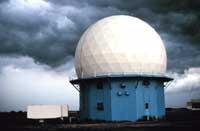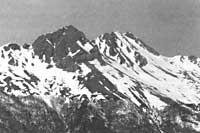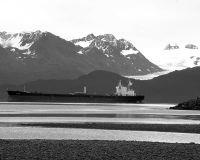Celebration of meteorologists
2000/03/26 Roa Zubia, Guillermo - Elhuyar Zientzia

The initial work was carried out by the IMO, which launched the first international cooperation in the field of meteorology, which was followed by generations of meteorologists. XX. The advances of the 20th century consolidated collaboration and advances focused on meteorology, hydrology and geophysical sciences. The WMO is undoubtedly the leading meteorological organization of the United Nations, but it is fully involved in international cooperation because weather and climate have no political or economic borders.
The collaboration of the members of the organization is voluntary and without economic interest, both in scientific work and in other works. The aim of the WMO is to foster international cooperation for observation, standardize the data collected and ensure exchange and apply the results obtained in meteorology-related areas, such as the application of climate study in water management, agriculture, aviation and navigation. 185 countries are partners of the WMO and the collaboration of the Meteorological and Hydrological Services of these countries is fundamental for research, professional training and technological exchange.
Many of the improvements in WWW are related to the Global Atmospheric Research Programme (GARP). GARP, which was launched in 1967 in collaboration with the ICSU (International Council of Science), has made great strides through its general climate understanding trials. Thanks to the studies carried out by GARP in the 70s, a numerical prediction of time was developed, a system that allows to predict the time with an advance of 8-10 days. Modeling at medium scale and in restricted areas has contributed significantly to understanding natural disasters caused by climate.

Economically, the benefit/cost ratio is generally assumed as 10:1. Being able to predict the natural disasters produced by time is very valuable for today's society. It is estimated that 250,000 people are killed each year by natural disasters and that 70% are of meteorological or hydrological origin. In 1971 the Tropical Cyclone Program was launched to minimize these adversities, with high performance.
But the ability to predict catastrophes has been accompanied by the improvement and acceleration of the routes to bring these forecasts to an unprepared population. In Bangladesh, for example, 300,000 people died in 1971 from a tropical cyclone, while in 1994 another of similar force killed only 200 people.
Between 1957/58 the International Year of Geophysics was celebrated and one of the results of the scheduled events was the implementation of an ozone layer observation system. The observation system was launched within a global project that analyzed atmosphere composition and climate change. In the 1970s, these papers outlined the first ideas on environmental protection: In 1972 the First Environmental Conference was held, in which the UNEP (United Nations Environment Programme) was created. In 1975 the first analysis of the ozone layer condition was published and two years later the ozone protection plan was drafted. Ozone layer objective XXI. It was a reform for the middle of the century and we must say that we are on the road. At that time, greenhouse gases were also measured.
In view of the results of all these measurements, the WMO launched a campaign to claim that climate change was occurring due to the need to extend the factors and effects of change to everyone. In 1976 the First World Climate Conference was held and the WCP (World Climate Programme) was launched. The programme is the basis of international climate change research work.

The "El Niño" effect has been one of the most important studies of WCP in recent times. "El Niño" has a great reflection on the surface temperature of the sea and therefore on the climate. In recent years, El Niño has also been particularly violent."
Food tested
WMO has also driven significant progress in food. An estimated 700 million unfed people will be in the world by 2010. Analyzing the climate, the WMO opposes the problem by developing weather-based farming techniques. These techniques have already been used in many countries. In the same vein, drought prediction has become a tool against desertification. Due to the close link between food shortages and desertification, it is very necessary to deal with the latter.
At home, in industry and in agriculture more and more water is needed and soon the situation will be unsustainable. It is estimated that by 2025 two-thirds of the world's population will have water problems. The WMO supports the Meteorological and Hydrological Services of each country to guide advice on the quality and quantity of water sources. The organization of origin, the IMO, launched in 1946 the first international plan of this type. In 1992 the summit on this issue was held in Rio de Janeiro. However, the hydrological cycle observation system has not been used until the 1990s, so water sources are one of the priorities of the organization and will have to work hard on it.

WMO has worked 50 years and will need another 50 more seeing all that remains to be done. XXI. In the 20th century, as it has done so far, WMO wants to continue building paths for the sustainable development of countries. Many of these objectives are contained in the UN Agenda 21 document: the protection of the ozone layer, climate change, desertification and biodiversity are the urgent problems we can find on this agenda, which are also found in society. Channeling forces against natural disasters towards sustainable development, food security, energy production and consumption, urban pollution and Atmosphere Health are also not forgettable headaches. In addition, the WMO aims to build bridges of collaboration between the Meteorological and Hydrological Services of developed and developing countries, promoting laws that reinforce these services and generating hurricanes in places where there are none. At the same time, the WMO will continue to claim that meteorological and hydrological information are internationalized and benefited by all.
Technology and collaborationThe work of the WMO is a network work in which the field of satellite technology has been worked hard. In 1961 the United Nations agreed to work for the peaceful use of space, and in that sense, two years after the launch of the WWW (World Weather Watch) program has become a basic project of the WMO. Currently, WWW is coordinating data in the meteorological and oceanographic fields. It organizes the collection, processing and dissemination of data. On the other hand, it controls a large set of satellites (geostable and orbiting the pole), 10,000 ground bases, 1,000 high-atmosphere stations, 7,300 ships, 300 fixed buoys, 600 aerial buoys and 3,000 aircraft. A total of 70,000 daily observations are made. The centers located on Earth, i.e. 34 regional meteorological centers and 185 National Meteorological Centers collect 15 million data and 2,000 weather graphs that are collected and distributed in real time. WWW also supports geophysical and environmental programs, focusing on the collection and early distribution of information on seismic activities, tsunami, movement of volcanic ash and discharges of radioactive substances. To this end, the latest innovations in atmospheric and terrestrial surface observation systems, telecommunications and satellites are constantly being launched at WWW and other WMO programs. The main objective is to understand weather and climate. |
Published in the supplement Natura de Gara

Gai honi buruzko eduki gehiago
Elhuyarrek garatutako teknologia






